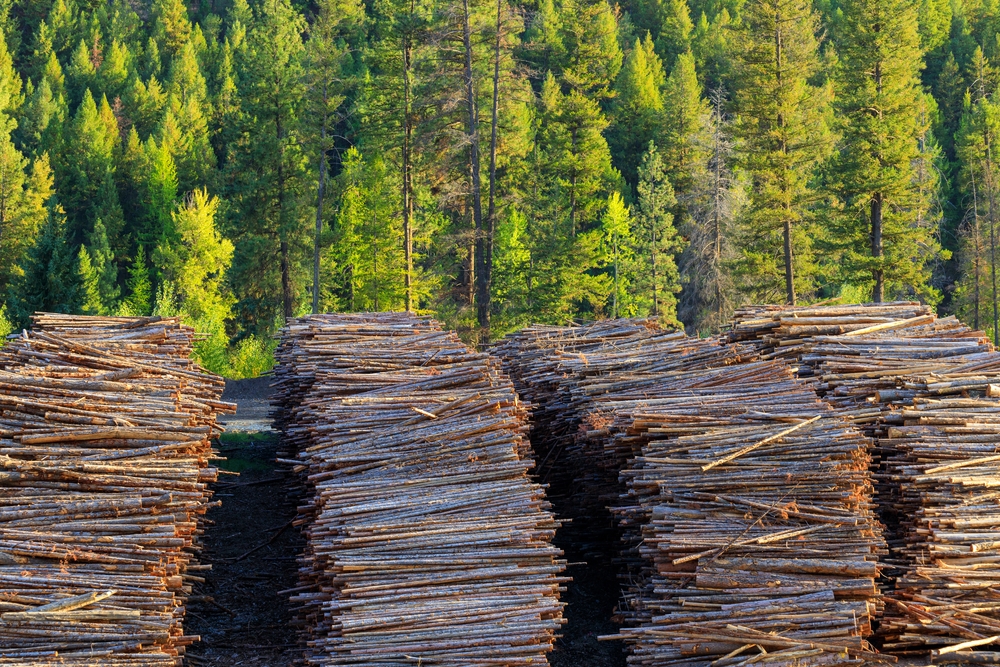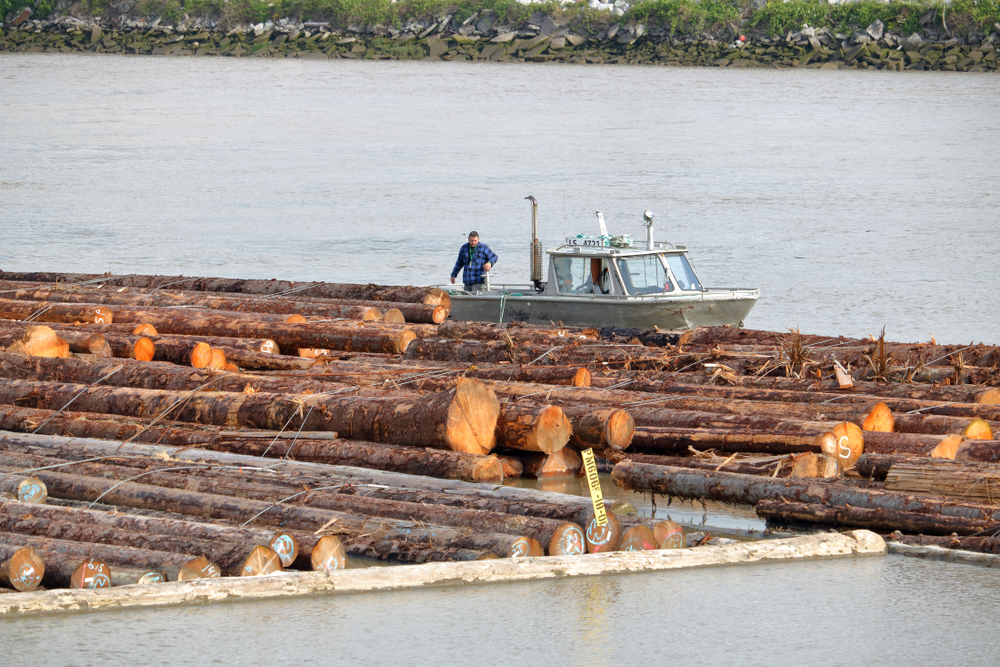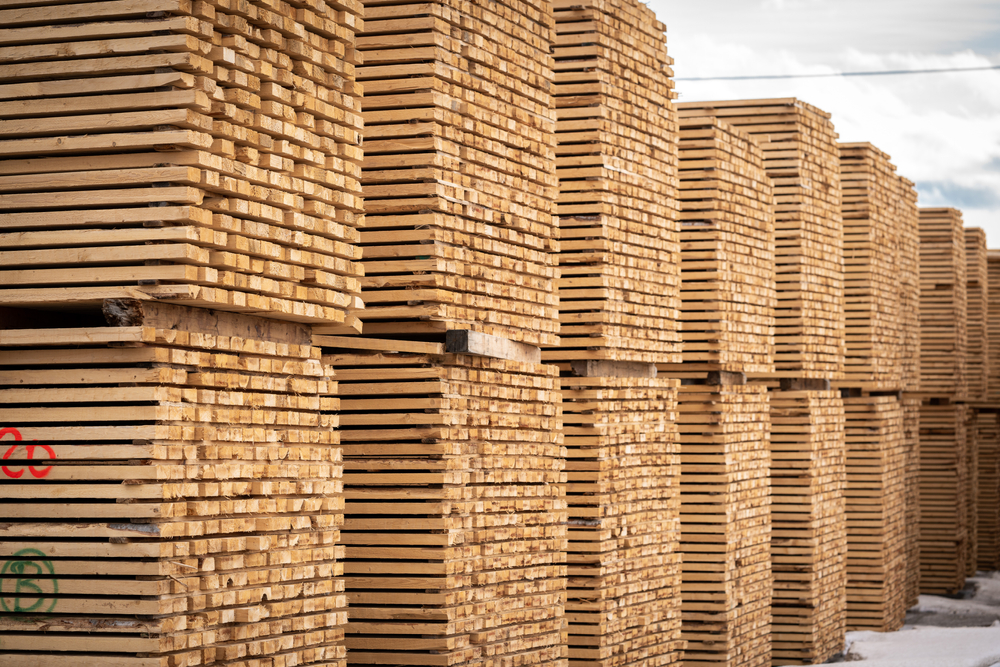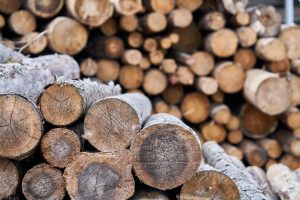As the housing market remains unstable, those wishing to renovate their homes or build a new house may wonder why materials are so expensive.
Lumber prices especially have spiked at an alarming rate, and much of the lumber used in US construction comes from Canada.
Because the Canadian lumber industry has experienced recent difficulties, the cost of lumber in the US has also gone up.
The price of lumber in Canada has skyrocketed due to several factors. The booming housing market in the US has provided a great demand for lumber, and the most popular type of lumber is white pine distributed from Canada.
However, a new tariff on Canadian lumber imported into the US, a tree shortage in Canada, and terrible weather disrupting transportation have added to high demand with limited supply, which generally creates high prices.
Table of Contents
Why is Canadian lumber so popular?

The lumber industry in Canada is large and produces a lot of products for the US.
This is partly because they have been able to sell their lumber cheaper than other American lumber companies.
Canada can offer lumber at a competitive price. Also, Canadian lumber companies have the luxury of proximity to the US.
Because Canada shares a border with the US, the Canadian lumber companies can use cheaper shipping methods like trucks and trains.
They can also deliver their product quickly due to being extremely close. Other nations cannot compete with this as they may need to cross large bodies of water, which is much slower and more expensive.
Ultimately, the proximity and ability to cut prices because of it has benefited Canadian lumber companies for decades.
However, a decades-long dispute between Canadian and American lumber companies has also affected current Canadian lumber prices.
Are there tariffs on Canadian lumber?
American lumber companies have long complained about whether the Canadian government subsidizes their lumber production.
In essence, private US lumber businesses claim that Canadian lumber companies can undercut their prices because of subsidiary money given to them by the government.

A few recent responses to this dispute have affected the current price of Canadian lumber. For example, the Trump administration placed a roughly 9% tariff on Canadian lumber in 2018.
This tariff caused a price increase. However, at the end of 2021, the Biden administration doubled the existing 9% tariff to a roughly 18% tariff.
So, as these administrators have sought to give US lumber an equal footing, these large tariffs charged to Canadian lumber companies have directly influenced the price of imported lumber.
The larger the tariff, the higher the price for Canadian wood. But higher tariffs at the border are not the only reason Canadian lumber prices have soared.
Is there a tree shortage in Canada?
Since the 90s, Canadian forests have suffered an infestation of beetles that have killed many of their trees set apart for lumber use.
These diseased trees have become a hazard for wildfires and are unsuitable for building materials.
Additionally, one of Canada’s largest lumber-producing provinces, British Columbia, suffered terrible wildfire seasons in 2017 and 2018.
Acres and acres of cuttable timber were consumed in these wildfires. Because of these tragic fires, there is now a shortage of cuttable wood.

As resources become scarce, they become more valuable.
A huge difficulty experienced by the logging industries is that they have to wait for the trees to mature before they can be harvested.
And trees take a long time to grow.
This means that recovery from a timber shortage takes a long time.
What has delayed lumber transportation?
Wildfires were not the only natural disasters to wreak havoc on Canadian lumber.
In November of 2021, extreme flooding plagued the people of British Columbia, Quebec, and other coastal areas of Canada.
The western floods hit first, and while the trees were not decimated like with the wildfires, much of the shipping routes, shipping equipment, and harvesting equipment were all damaged or lost.
So, since November 2021, Canadian lumber companies have scrambled to repair railways, trucks, and cutting equipment.
As you can imagine, this brought shipping and production to a crawl. And, once again, when a resource is scarce, it becomes more valuable.
As Canadian lumber has been harder to ship, the lumber that does get shipped is more expensive.
However, even though the shipping routes were disrupted because of the floods, difficulties had been occurring even before then.
Covid-19 was already wreaking havoc on the Canadian lumber industry before the floods of November 2021.
How has the pandemic affected the Canadian lumber industry?

Covid-19 took its toll on many of the economies and businesses of the world. As the pandemic spread across the globe, many industries suffered and came to a screeching halt.
And, like much of the global workforce, the Canadian lumber industry’s supply of workers has not completely recovered.
This provides challenges that are difficult to overcome. In 2020, the demand for lumber decreased dramatically.
Then the resignations, layoffs, and other revenue-saving tactics came into play. However, in 2021, the need for lumber came flaring up again as the housing market went into warp speed.
Suddenly, production was required, but the lumber companies didn’t have the personnel to meet the demands.
Before the flooding disrupted shipping lines and methods, the Canadian lumber industry struggled to find workers, truck drivers, and staff for other important roles.
All of these challenges and a labor shortage within the industry have all taken part in increasing the prices of Canadian lumber.
The short-term outlook
Unfortunately, lumber prices in the near future may fluctuate up and down in minor ways, but do not count on lumber prices dropping drastically in 2022.

Some of the difficulties mentioned above are short-term difficulties, and hopefully, they can be taken care of.
The labor shortage recovery can be fixed in the short term. Hopefully, Canadian workers will fill the need for workers as Canada recovers from the pandemic.
With this, recovering, rebuilding, and streamlining shipping can once again make it possible to get lumber to the US.
The long-term recovery
Unfortunately, there are many long-term challenges that will keep the price of Canadian lumber high for the time being.
The beetle infestations and forest fires that decimated the harvestable lumber do not have quick fixes.
Canadian lumber is not an unlimited commodity, and right now, the industry is experiencing scarcity.
So, while the demand may be high, there are only so many trees that Canada can currently cut down.
And, while laws may change in the future, a new tariff put into place by the sitting president just a few short months ago may not be going away anytime soon.
The high tariffs on imported Canadian lumber will ensure that the prices do not go back to pre-pandemic levels.
Ultimately, the increased prices of Canadian lumber cannot be determined by just one factor.

The multitude of factors contributing to the current high prices come from a combination of economic challenges, political policies, and natural disasters.
And, with the current spiking of oil prices, the price of Canadian lumber may continue to climb.

















